The Post Office Packet Service dates to Tudor times and ran until 1823, when the Admiralty assumed control of the service. Originally, the Post Office used packet ships to carry mail packets to and from British embassies, colonies and outposts. The vessels generally also carried bullion, private goods and passengers. The ships were usually lightly armed and relied on speed for their security. However, Britain was at war almost continuously during the 18th and early 19th centuries with the result that packet ships did get involved in naval engagements with enemy warships and privateers, and were occasionally captured.
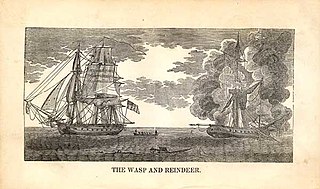
HMS Reindeer was a Royal Navy 18-gun Cruizer-class brig-sloop of the Royal Navy, built by Samuel & Daniel Brent at Rotherhithe and was launched in 1804. She was built of fir, which made for more rapid construction at the expense of durability. Reindeer fought in the Napoleonic Wars before succumbing in 1814 to the guns of USS Wasp during the War of 1812.

HMS Kingfisher was a Royal Navy 18-gun ship sloop, built by John King and launched in 1804 at Dover. She served during the Napoleonic Wars, first in the Caribbean and then in the Mediterranean before being broken up in 1816.
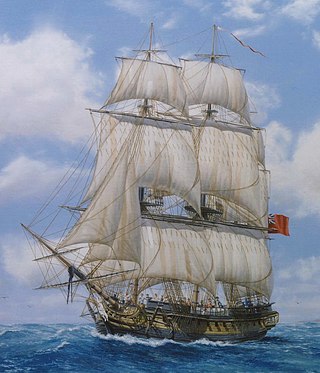
HMS Melampus was a Royal Navy fifth-rate frigate that served during the French Revolutionary and Napoleonic Wars. She captured numerous prizes before the British sold her to the Royal Netherlands Navy in 1815. With the Dutch, she participated in a major action at Algiers and, then, in a number of colonial punitive expeditions in the Dutch East Indies.
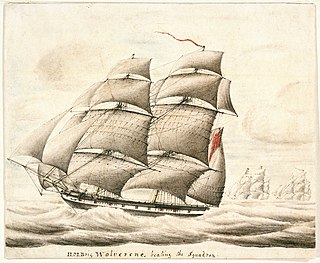
HMS Wolverine was a Royal Navy 18-gun Cruizer-class brig-sloop, launched in 1805 at Topsham, near Exeter. Early in her career she was involved in two fratricidal incidents, one involving a British frigate and then a newsworthy case in which she helped capture a British slave ship. She later captured a small naval vessel and several privateers, and took part in the invasion of Martinique, and during the War of 1812, in the attack on Baltimore. Wolverine was decommissioned in August or September 1815 and was sold on 15 February 1816.
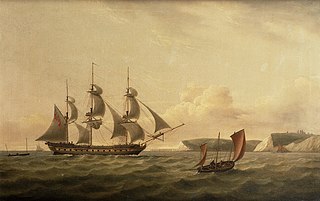
HMS Amazon was a 38-gun fifth-rate Amazon-class frigate of the Royal Navy. She served during the French Revolutionary and Napoleonic Wars under several notable naval commanders and played a key role in the Battle of Copenhagen under Edward Riou, who commanded the frigate squadron during the attack. After Riou was killed during the battle, command briefly devolved to John Quilliam. Quilliam made a significant impression on Horatio Nelson, who appointed Quilliam to serve on the flagship HMS Victory. Amazon passed to William Parker, who continued the association with Nelson with service in the Mediterranean and participation in the chase to the West Indies during the Trafalgar Campaign. Amazon went on to join Sir John Borlase Warren's squadron in the Atlantic and took part in the defeat of Charles-Alexandre Léon Durand Linois's forces at the action of 13 March 1806. During the battle, she hunted down and captured the 40-gun frigate Belle Poule.

HMS Belette was an 18-gun Cruizer-class brig-sloop, built by King at Dover and launched on 21 March 1806. During the Napoleonic Wars she served with some success in the Baltic and the Caribbean. Belette was lost in the Kattegat in 1812 when she hit a rock off Læsø.
HMS Elk was a Cruizer-class brig-sloop, built of pine, and launched in 1804. She served on the Jamaica station where she captured a number of privateers. She was broken up in 1812.

HMS Peterel was a 16-gun Pylades-class ship-sloop of the Royal Navy. She was launched in 1794 and was in active service until 1811. Her most famous action was the capture of the French brig Ligurienne when shortly after Peterel captured two merchant ships and sent them off with prize crews, three French ships attacked her. She drove two on shore and captured the largest, the 14-gun Ligurienne. The Navy converted Peterel to a receiving ship at Plymouth in 1811 and sold her in 1827.

The action of 2 March 1808 was a minor naval battle between the Royal Navy's 18-gun Cruizer-class brig-sloop HMS Sappho, and the 28-gun, Danish two-decker brig Admiral Yawl, during the Gunboat War. Sappho, under the command of Captain George Langford, discovered and chased Admiral Yawl, which was steering a course to intercept several merchant vessels to leeward. After a short engagement Sappho captured Admiral Yawl, commanded by Jørgen Jørgensen.
HMS Dominica was a schooner that the British purchased in 1805 in the Leeward Islands. Her crew mutinied in 1806, turning her over to the French, who immediately sent her out as the privateer Napoléon. The British recaptured her four days after the mutiny and returned her to their service. In British service she captured some six small privateers. She was broken up in 1808.
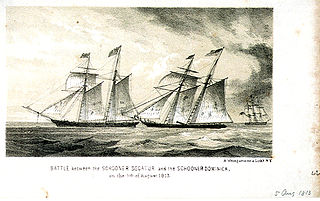
HMS Dominica was the French letter of marque schooner Duc de Wagram, which the British captured in 1809 in the Leeward Islands and took into the Royal Navy in 1810. The American privateer Decatur captured her in 1813 in a notable single-ship action. However, Majestic recaptured her in 1814. She was wrecked in 1815
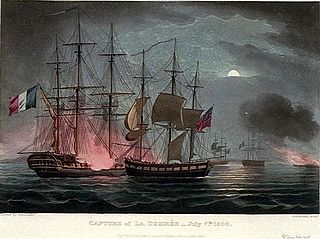
HMS Dart was one of two sloops built to an experimental design by Sir Samuel Bentham and launched in 1796. She served the Royal Navy during the French Revolutionary wars and the early part of the Napoleonic wars before being sold in 1809 for breaking up.
Duc de Dantzig was a brig launched in 1808 at Nantes that became a privateer. She captured a number of vessels, generally plundering them and then letting them go, or burning them. She disappeared mysteriously in the Caribbean in early 1812, and became the subject of a ghost ship legend.
HMS Constant was an Archer–class gun-brig of the Royal Navy, launched in 1801 for service against the French during the French Revolutionary and Napoleonic Wars. She was variously stationed in English home waters, the Baltic, the Caribbean, and off the coast of Spain, and was responsible for the capture of at least seven enemy vessels during her fifteen years at sea. The Royal Navy sold Constant at Chatham Dockyard in 1816.
Wanstead was launched in 1802. In 1807 a French privateer captured her, but the British Royal Navy recaptured her the next day. Then in 1810 she was again captured by a French privateer, and was again recaptured a few days later. In 1819 she traded with India or China under a license from the British East India Company (EIC). She was wrecked in 1820.
Windsor Castle was launched at Yarmouth in 1804. She spent her entire 11-year career as a Falmouth packet, primarily on the Falmouth–Halifax–New York–Halifax–Falmouth route and the Falmouth–Leeward Islands–Falmouth route. She also sailed on some other voyages. She was involved in two notable single-ship actions. In the first, in 1807, she captured her attacker, a French privateer schooner, in a sanguinary encounter. In the second, in 1815, an American privateer captured her. A prize crew took her into Norfolk, Virginia, where she was sold at auction.

HMS Imperieuse was a 38-gun fifth-rate frigate of the Royal Navy. Built in Ferrol, Spain, for the Spanish Navy she was launched as Medea in 1797. In 1804 she was part of a squadron carrying gold from South America to Spain that was seized by the British while Spain and Britain were at peace. Medea was subsequently taken into service with the Royal Navy and was briefly named HMS Iphigenia before being renamed Imperieuse in 1805.
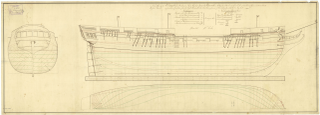
The Thames-class frigate was a 32-gun fifth-rate frigate class of eight ships of the Royal Navy based on the Richmond-class frigate designed by William Bately. The ships were ordered to the older design, which was of a smaller type of ship compared to more modern designs, so that they could be built quickly and cheaply in time to assist in defending against Napoleon's expected invasion of Britain. The class received several design changes to the Richmond class, being built of fir instead of oak, with these changes making the class generally slower and less weatherly than their predecessors, especially when in heavy weather conditions. The first two ships of the class, Pallas and Circe, were ordered on 16 March 1804 with two more ordered on 1 May and the final four on 12 July. The final ship of the class, Medea, was cancelled on 22 October before construction could begin but the other seven ships of the class were commissioned between 1804 and 1806.

HMS Jason was a 36-gun fifth-rate Penelope-class frigate, launched in 1800. She served the entirety of her career in the English Channel, mostly in the frigate squadron of Commodore Charles Cunningham. Serving off the coast of France, especially around Le Havre and Cherbourg, she captured several French privateers and recaptured a British merchant ship in a cutting out expedition. Having only been in commission for around fifteen months, Jason was wrecked off the coast of St Malo on 21 July 1801. Her crew were saved and later exchanged, and in August her wreck was burned to prevent the French from rescuing it.















